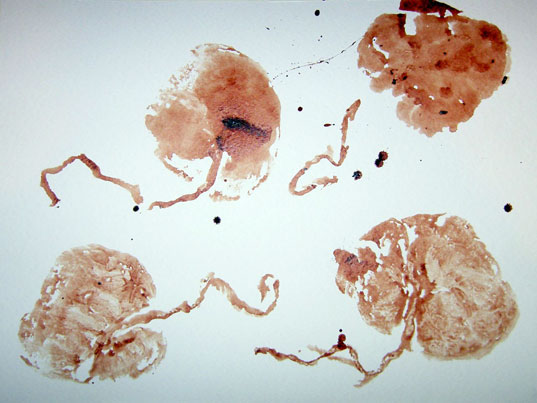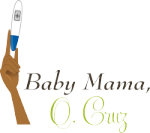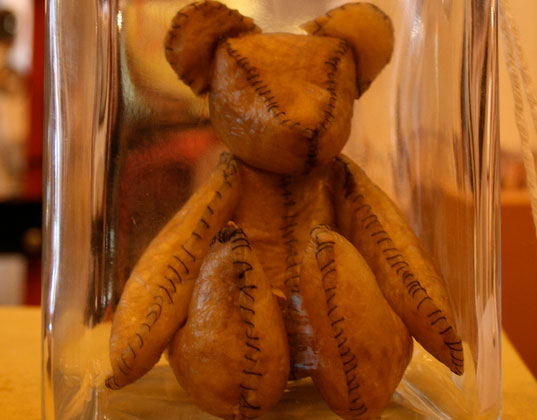I decided last night to catchup on the missed episodes of Doctor Oz and I arrived upon very interesting facts about the placenta.
This organ grows from the time of conception to eventually take over the production of hormones needed to sustain the pregnancy at around 12 weeks gestation (from your last menstrual period). It supplies your growing baby with a means of obtaining nutrients for development as well as a method of waste disposal. This is the only disposable organ ever made.
Other cultures have come to see the placenta in a completely different light. There are even ceremonies and beliefs held about the placenta that are completely foreign to us.
For example, in some cultures it is commonplace to leave the baby attached to the placenta, rather than clamp the cord, until the cord dries up and falls off. This is called a Lotus birth and is not practiced often in the United States. The theories behind this are that it helps slow the new family down and offers them more seclusion in the first few days when a getting to know you period is in order.
One thing you see here is that there are many families who will hold ceremonies with the placenta after birth. Some families will take the placentas and bury them in the ground to celebrate the new life given to them. This dedication of the placenta back to the earth or in honor of the child is becoming more frequent. A year later a tree or flower is then planted in the same spot to allow the placenta to nourish its growth. The reason that you would wait this year is that a placenta is so nutrient rich that it would kill anything planted before that period.
What about placenta art? Yes, you can make art out of it. Generally mothers talk about placenta prints. After the birth you take a piece of paper and lay the placenta on it. If it is fresh you can let the blood and amniotic fluid leave the print or others choose to use paints to add color. Now what? Well, hang your framed art or store it for safekeeping.
Then comes the practice of placentophagia, eating the placenta, is also practiced in some parts of the world. There are even meal like recipes for cooking placentas, including placenta stew, placenta lasagna, power drinks with blended placenta and others. Though some mothers have been reported to eat placenta raw.
There are many reasons listed for eating the placenta, including it helping stem postpartum depression and it supposedly helps to contract the uterus after the birth. We know that many animals eat their own placenta, including as a means to hide the scent from predators.
In our modern world this may seem barbaric and some have even said that this could spread HIV/AIDS or Hepatitis. While this is very true if people other than the mother consume the placenta, normally it is only the mother partaking of the placenta.
In Chinese Medicine, the placenta is known as a great life force and is highly respected in terms of its medicinal value. However, in this field it is not cook, but rather usually dried. To dry a placenta you would simply dehydrate it in the oven, then using a mortar and pestle grind it up. From there you can mix it with food or ingest it within capsules. I have actually known one mother who did this drying technique. It is my only personal experience with placentophagia.
No matter what you choose to do with your placenta, remember to value the life it has helped you nurture and bring forth. It is, after all, the Tree of Life.
5 Things to Do With Your Placenta
1. Craft A Teddy Bear
Doing it for the Kids unveiled many additional fascinating, inventive ‘toys’ at the100% Design Exhibition in London. The goal of the exhibition is to inspire designers, educators and parents to be more critical of the toys that shape a child’s values and the impact toy making has on the environment.To make this unique Teddy Bear, the placenta must be cut and cured with sea salt, and then made pliable with a tannin and egg mixture before transforming it into a one-of-a-kind teddy. Creepy right??
2. Make Placenta Art Prints

Art appreciation is subjective, and it's quite possible that only the rightful owners of these one-of-a-kind placenta art prints will truly appreciate them. The above image is from one mother's website featuring the masterpieces she created with her placenta. She aptly titles select paintings, 'Jellyfish' and 'Balloons,' given their similar shapes. She also gives precise instructions on how to make placenta art -- but it's not for the faint of heart. She explains, "You don't need to use paint to make the prints. There is enough blood in the placenta to make the prints... You may want to remove some remnants of the amniotic sac. Place the placenta on the paper with the side you want to print while holding the umbilical cord in one hand."
3. Plant a Placenta Fruit Tree
You've heard of the proverbial tree of life -- well you can have one of your very own if you plant a placenta tree. The tradition in some cultures is to simply bury the placenta in the ground for various reasons ranging from demonstrating the connection between humans and the earth to protecting and ensuring the health of the baby and mother, but you can create a "living monument" to your child if you bury the placenta and then plant a fruit tree over it. Planet Green offers 5 Tips for Planting a Placenta Fruit Tree, which will help this idea take root in your yard.
Originial Source here


